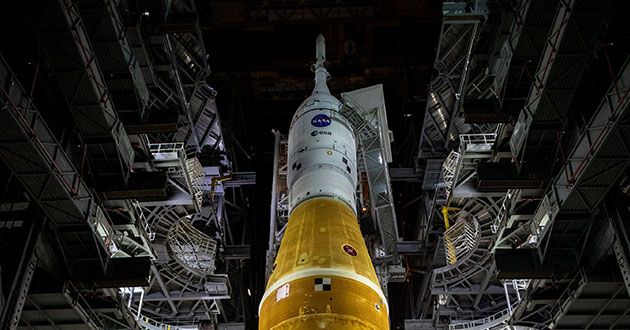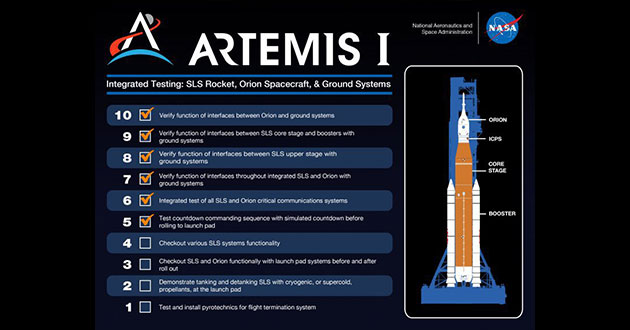NASA’s first Space Launch System, or SLS, rocket and Orion spacecraft is set to meet Launch Pad 39B for the first time this week.
The integrated rocket — with a core stage and avionics designed, developed, tested and produced by Boeing employees and partners — will roll out of the Vehicle Assembly Building, or VAB, at NASA’s Kennedy Space Center in Florida on Thursday, March 17 for launch pad checkouts and a crucial prelaunch test known as wet dress rehearsal, or WDR. It will then be returned to the VAB for final launch preparations before rolling out again, this time for launch of the uncrewed Orion to the Moon on the Artemis I mission.
While the core stage passed its own WDR at NASA’s Stennis Space Center in Bay St. Louis, Mississippi, as part of a test series that concluded last year, the Artemis I mission WDR will include a fully integrated Space Launch System including the core stage, upper stages, solid rocket boosters, Orion capsule and new mobile launcher. It will take place about two weeks after rollout.
Cryogenic propellants will be loaded and stabilized, the launch countdown sequence will be conducted twice, and finally the propellants will be de-tanked — all with SLS atop its mobile launch platform on the pad.

